Fohlio is a comprehensive specification and procurement tool that helps users take on larger projects. Empower teams to open stores faster and improve their operational workflow with specification, prototyping, estimating, and procuring tools.
Why Procurement Teams Struggle to Manage Materials at Scale
You didn’t sign up to manage thousands of SKUs manually. But here you are, juggling mismatched spreadsheets, chasing supplier updates over email, and fielding requests from every team about the same five products. Sound familiar?
Most procurement and category management teams in global organizations are stuck here: spec data is fragmented, pricing is outdated, supplier contact info is half-accurate at best—and yet your projects still need to launch on time and under budget.
This isn’t just a data mess. It’s a speed issue. A visibility issue. A consistency issue. And at global scale, the cracks widen fast.
But there is a way out. You don’t need more spreadsheets. You need structure.
What follows is a practical roadmap for how to manage your materials with confidence—whether you’re overseeing five brands or 500 properties. It’s built on real conversations with procurement leaders who’ve outgrown their spreadsheets, and built systems that scale.
.png?width=608&height=456&name=Feature%20Image%20(1).png)
1. Build a Central Library That Holds Every Approved Product
Let’s start with the mess everyone knows: someone sends you a quote for a chair. You check your spreadsheet. There are three rows labeled “lounge chair.” One has a price. One has a spec sheet. One links to a supplier you haven’t used since 2022.
You ask your team: which version is the one we’re supposed to use?
Silence.
This is why your spec management system starts with a clean, centralized material library. It has to go beyond cataloging.
it has to reflect the way your business actually functions.
In Fohlio, your library isn’t just a list of SKUs. It’s a living, structured database. You can:
- Upload and centralize every approved product
- Define categories, subcategories, and attributes based on your internal logic (not someone else’s schema)
- Track supplier relationships and delivery performance by region
- Attach design intent documentation, pricing details, and compliance requirements
- Create alternate versions of products that differ by brand, country, or finish type
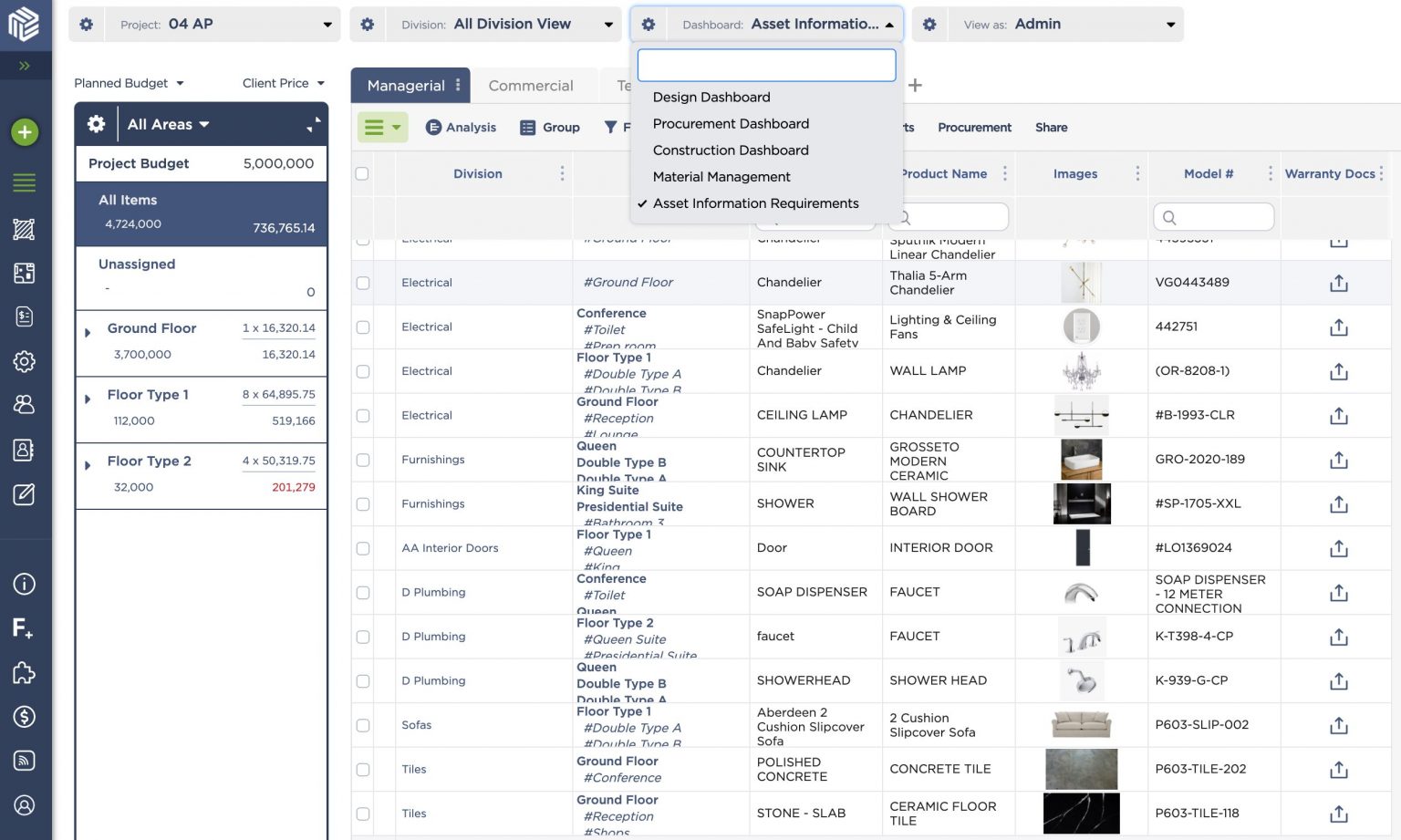
For example, some teams use mock-up room specs—standardized templates with approved finish schemes—to bulk upload items into the library with contextual data already baked in. It’s not just what the product is. It’s how, when, and where it’s used.
Spec management starts with getting your foundation right. And this is that foundation.
Read: Why Fast-Growing Interior Design Firms Break: How to Scale Design Ops for Multiple Project Types
2. Package Specs into Blocks That Scale with Your Rollouts
The only thing worse than reinventing the wheel is doing it ten times in a row, in ten different tabs.
You’ve done the work of approving products for your core spaces: boardrooms, reception areas, bathrooms, hotel rooms. But every time a new location opens, your team goes back to square one: re-selecting, re-checking, re-uploading.
Fohlio’s Product Blocks eliminate that waste.
These are pre-built sets of products—configured around spaces you build again and again. Instead of pulling individual items, you pull an entire setup. Think:
- “Standard Guest Bathroom – North America”
- “Wellness Suite – Asia Tier 2”
- “Executive Office – Minimalist Design Language”
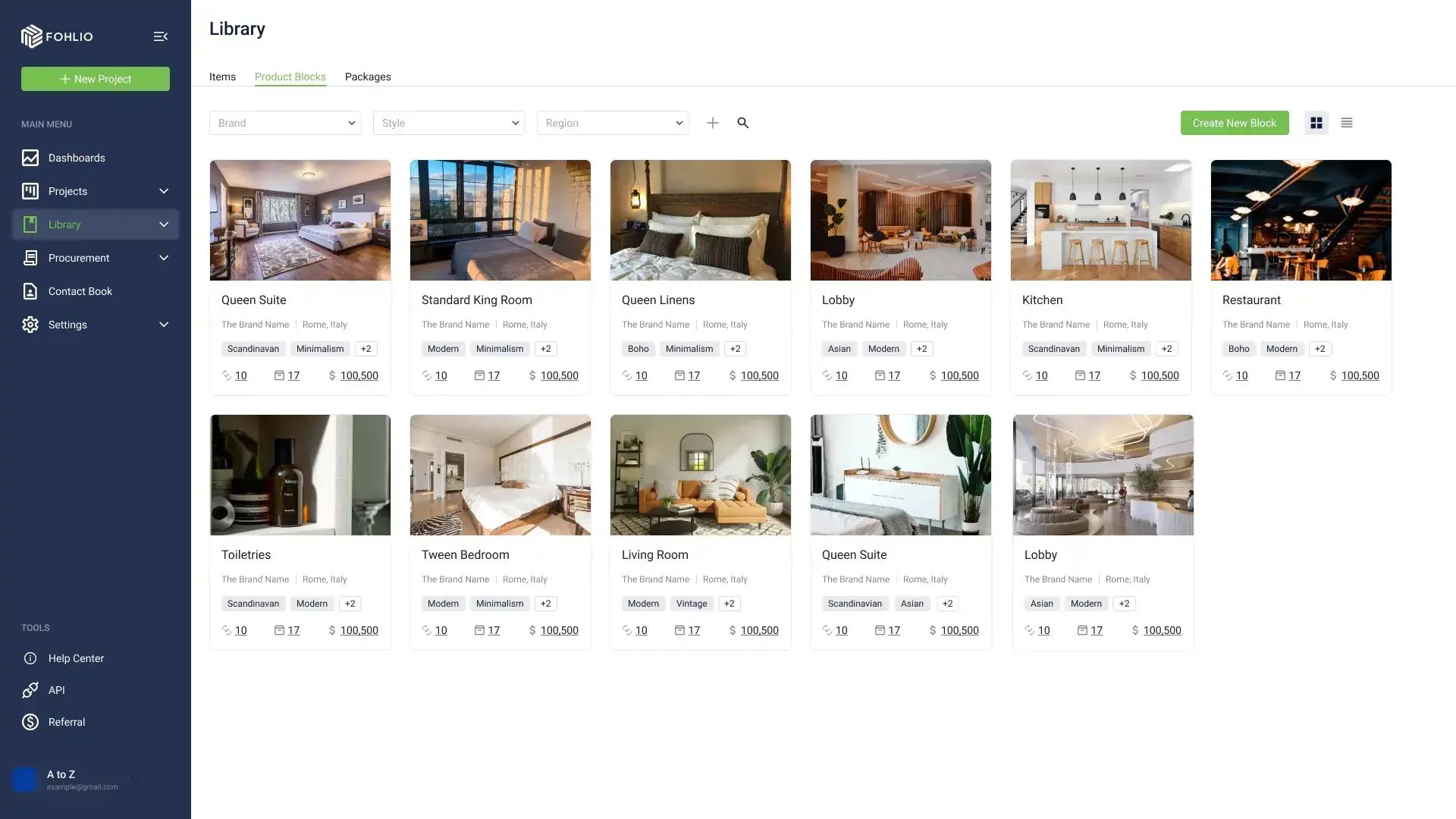
Each Product Block pulls from your internal library, so any update made to the item (a lead time change, a discontinued product, a vendor switch) updates wherever that block is used.
And you can assign logic based on:
- Project type (renovation vs. new build)
- Region or country
- Brand family
- Pricing tier
Procurement teams love this because they no longer have to babysit every spec for every rollout. Design teams love it because their intent stays intact. And the business loves it because you scale smarter—without sacrificing control.
Read: Pre-Bundled Templates & Seamless Estimating for Faster Projects
3. Track Supplier Pricing Across Regions in Real Time
Pricing doesn’t just change. It shifts. It lags. It surprises you.
What looks like a reliable vendor relationship can break down with one missed update: a tariff change, a new distribution partner, or an expired rate agreement. Suddenly, your numbers don’t work. And because the update never made it past someone’s inbox, you’re left playing catch-up with finance and value engineering.
In Fohlio, pricing lives inside the product profile. That means it’s never buried in a back-and-forth thread or locked in a legacy spreadsheet that only one person updates.
Here’s what you can do:
- Store multiple pricing fields: market rate, internal negotiated rate, and client-facing markup
- Assign pricing per region or per supplier, and track variance
- Set pricing effective dates, expiration rules, and renewal alerts
- View price history logs and tag pricing reviews by quarter or fiscal year
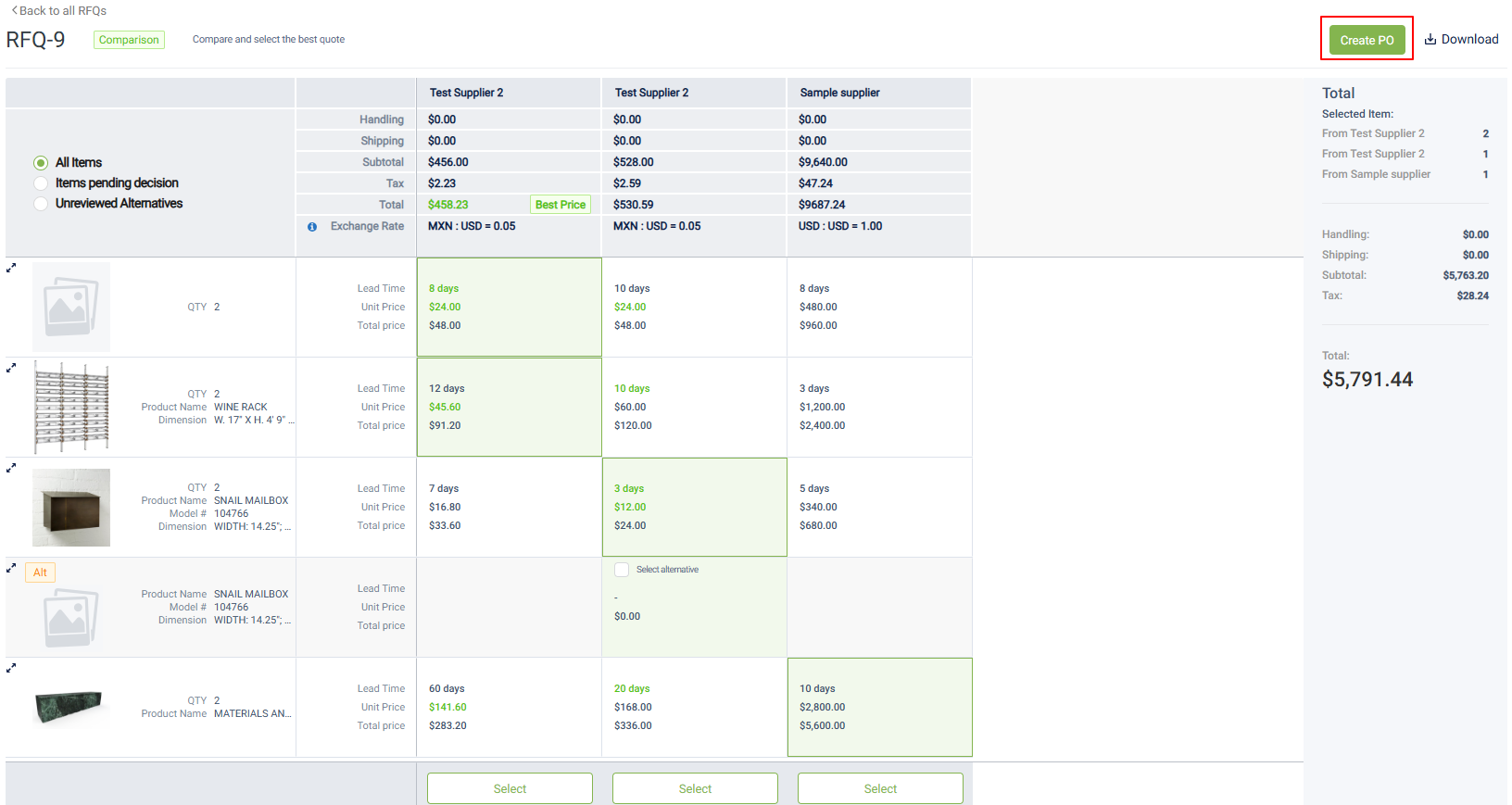
And if your supplier changes a rate, the system doesn’t just record it—it flags it for review and approval, so nothing slips through the cracks.
This is how spec management protects your margin.
4. Replace Email-Based Approvals with Structured Approval Management
You know how it goes: You get an email from design about a new fabric. Finance wants to know if it fits the budget. Legal needs to review the fire rating. Procurement wants to see lead time.
What starts as a small change spirals into a 30-email chain—and still no one knows if the product is approved.
This is what structured approval management replaces.
In Fohlio, you can build workflows that reflect how your team actually makes decisions:
- Set up sequential or parallel approval chains by department, role, or region
- Create status stages like Draft, Submitted, In Review, Approved, Rejected
- Assign comments and action items directly within the spec
- Auto-log approval timestamps for auditing and traceability

Some teams even apply spec management at multiple levels—product, kit, and project—to ensure nothing enters a build without the right eyes on it. And if something changes after approval (say, a discontinued finish or pricing shift), stakeholders are automatically alerted and can re-approve or swap in an alternate.
This turns approval from a guessing game into a process with built-in accountability.
Read: The Psychology of Stakeholder Approvals: Why It’s So Hard to Get a “Yes”
5. Give Each Team the View They Actually Need
Procurement doesn’t need to see the mood board. Design doesn’t need the vendor contract. Ops doesn’t care about unit pricing—they need the install manual.
But when you’re managing materials across departments, this is where things go sideways. Everyone is looking at the same data—and yet still working off different versions.
Fohlio solves this with role-based dashboards and custom views.
- Designers get clean, visual layouts of the full spec, with images, color codes, and mood board integration
- Procurement gets pricing data, vendor contacts, and quote tracking
- Finance sees only what’s relevant for reconciliation
- Facilities teams access maintenance schedules, warranty docs, and reorder options
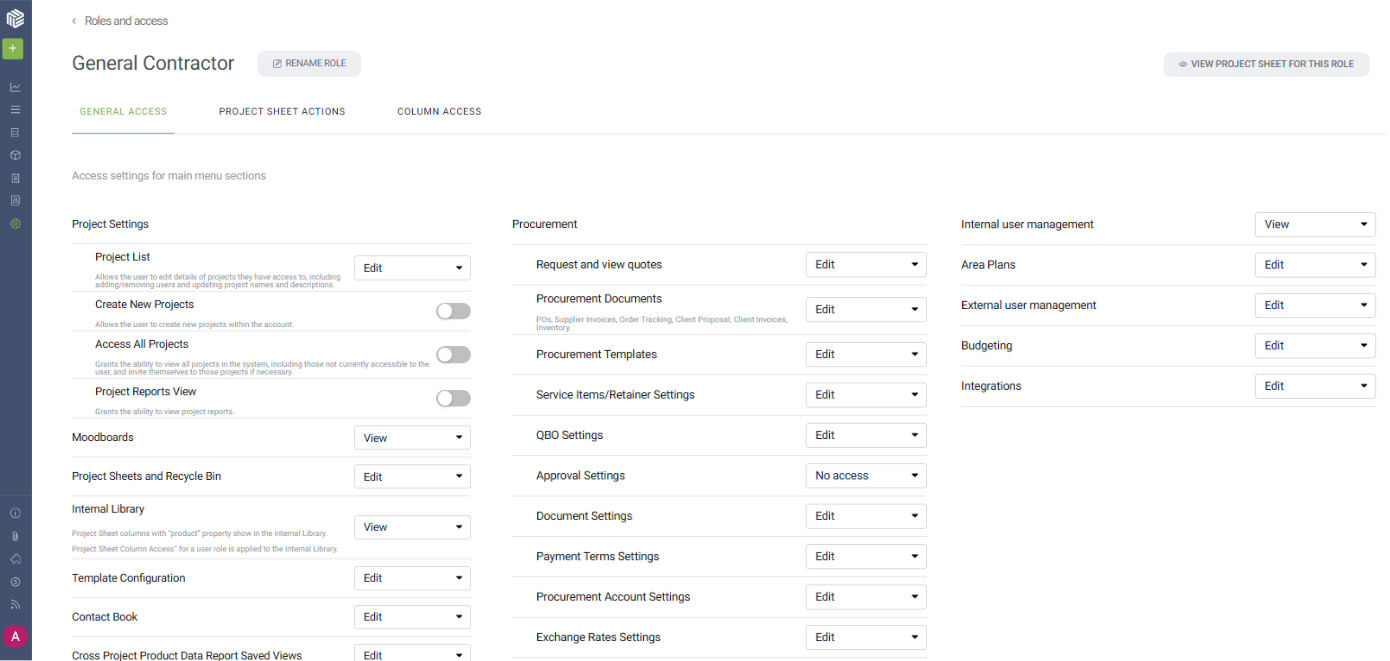
Even external stakeholders—like owner reps or consultants—can be granted limited access views.
This keeps everyone working in the same ecosystem, but only on what matters to them. It protects your data integrity while unlocking collaboration.
Extend Spec Management Beyond Procurement to Asset Tracking
Procurement doesn’t end when the invoice is paid. It ends when the asset is installed, logged, maintained, and—eventually—replaced.
In many organizations, this handoff is where spec management breaks down. A spec change in procurement never makes it to the warehouse. An install gets done without documentation. A warranty is never logged. And when something breaks, no one knows who to call.
Fohlio brings spec management full-circle by supporting asset tracking from the start.
- Tag SKUs with QR codes linked directly to their Fohlio profile
- Log install locations and quantities per room, per site
- Track care guides, install instructions, and warranty expirations
- Forecast replacement cycles using lifecycle rules and custom logic
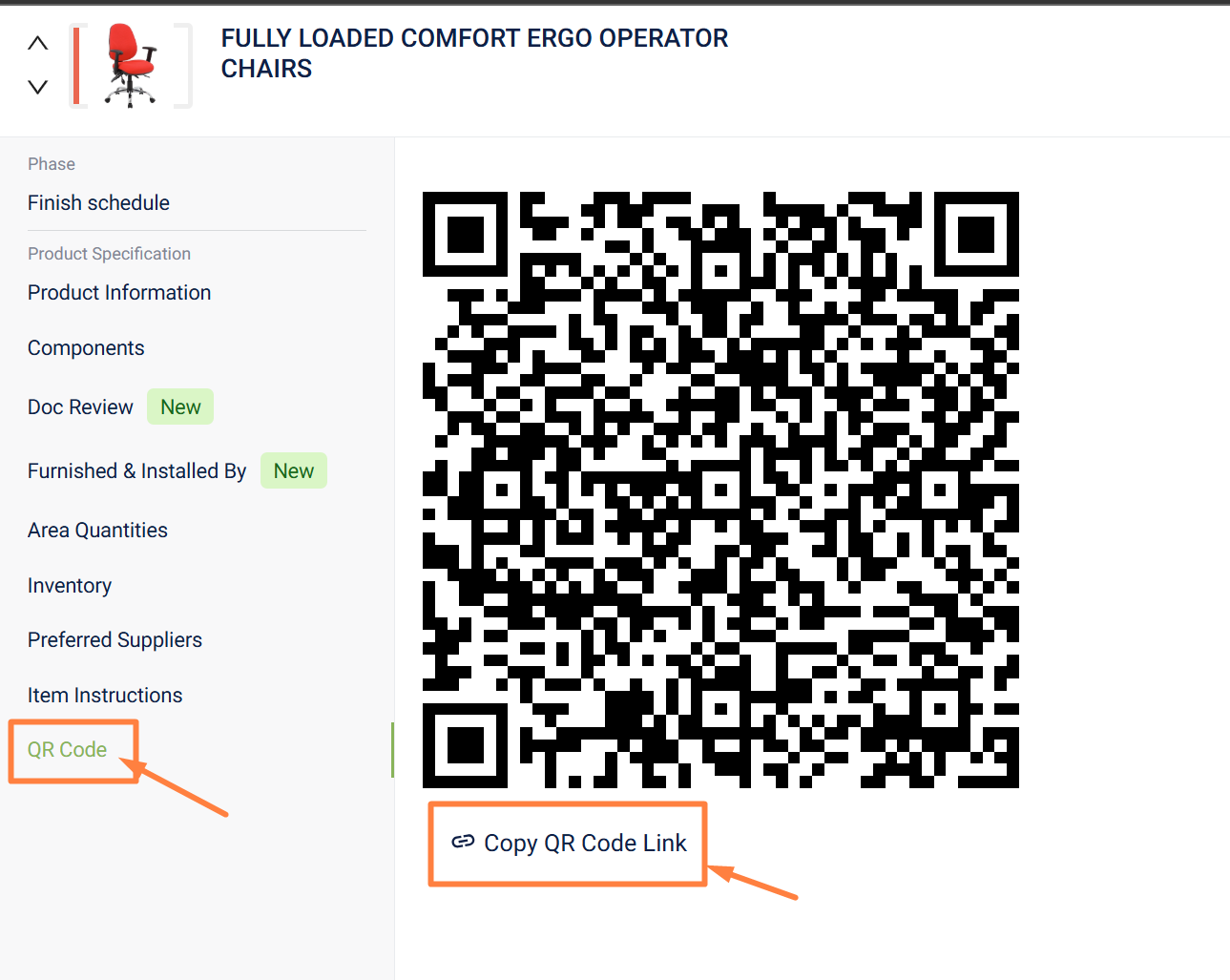
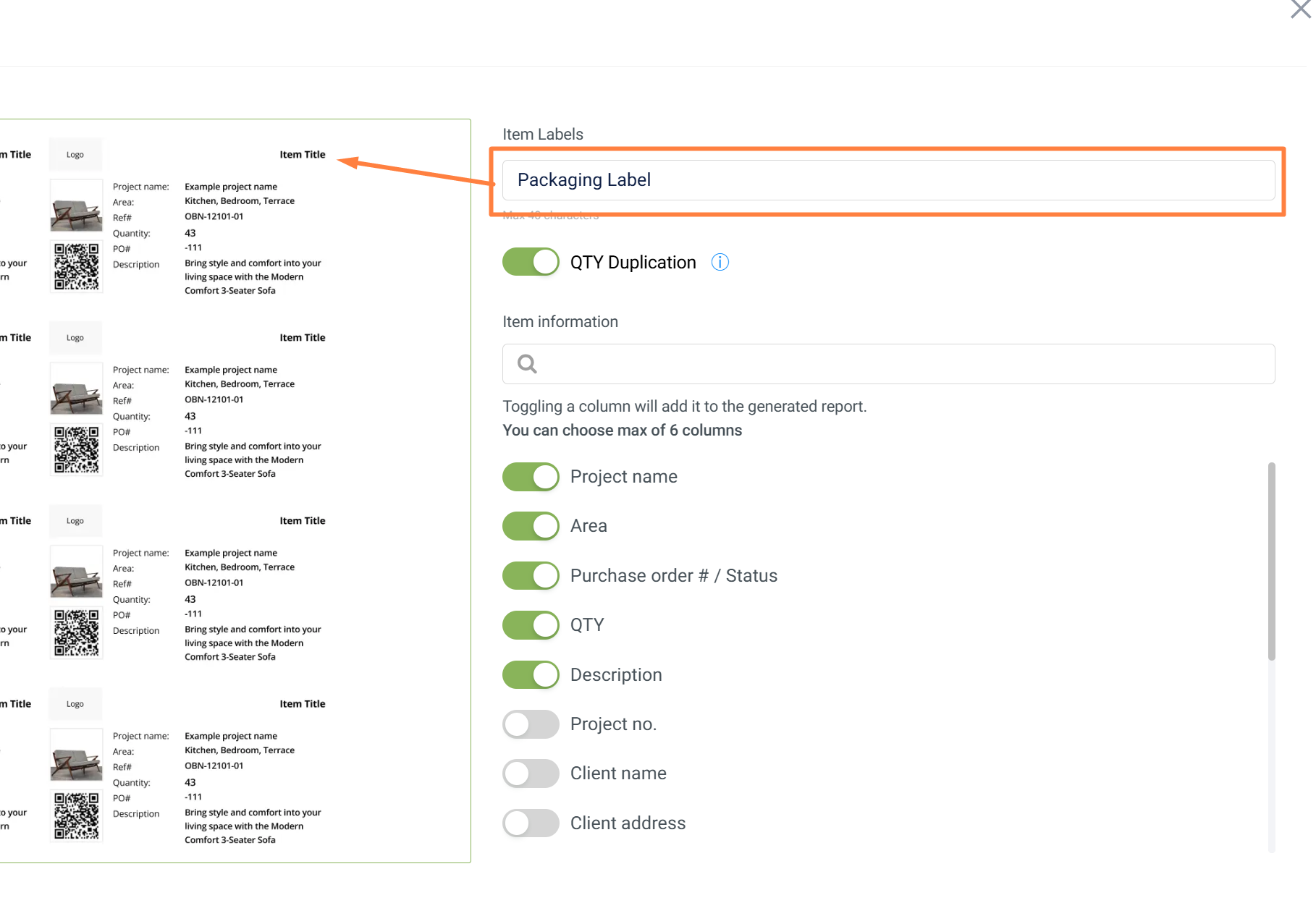
For example: One team used QR codes to link 100+ site assets back to their original product data, making maintenance scheduling and reordering seamless. No guessing. No downtime. No surprises.
When spec management is built into the lifecycle—not bolted on later—it becomes an operational advantage.
Start Simple and Scale Smart
The idea of “spec management” can feel like a major overhaul. But most teams start small.
You don’t need to transform overnight. You just need a place to begin.
Start with your spreadsheet.
Fohlio’s onboarding team will help you:
- Import your existing product list
- Match columns to structured attributes
- Clean duplicates and consolidate naming conventions
- Upload associated documents and spec files
From there, you can:
- Define your first product categories
- Build your first kit
- Launch your first approval workflow
The key is: you’re not building a new system. You’re just structuring the one you already use—so it finally works with you.
And as you grow, Fohlio grows with you: multi-brand management, cross-regional reporting, currency toggles, supplier mapping, external user access, audit logging—the deeper your need, the more you can configure.
Spec management isn’t a constraint. It’s a strategy.
Good Spec Management Is a Procurement Advantage
You’ve been asked to do the impossible:
Move faster. Cut costs. Match brand. Match design. Enforce consistency. Be flexible. Stay compliant. Track everything. And do it without a proper system.
A managed material structure doesn’t just help you get more done. It gives you the clarity and confidence to lead.
Fohlio gives you the platform to:
- Make better decisions faster
- Collaborate across teams and timelines
- Control costs without losing control of the design
- Build a future-proof process that scales with growth
Because the bigger your business gets, the more structure you need.
And the sooner you start, the more time—and money—you save.
Want to see how it works?
Book a walkthrough with our team, and we’ll show you how leading procurement and design teams are managing specs with speed, visibility, and confidence.
Fohlio is a comprehensive specification and procurement tool that helps users take on larger projects. Empower teams to open stores faster and improve their operational workflow with specification, prototyping, estimating, and procuring tools.
.png)